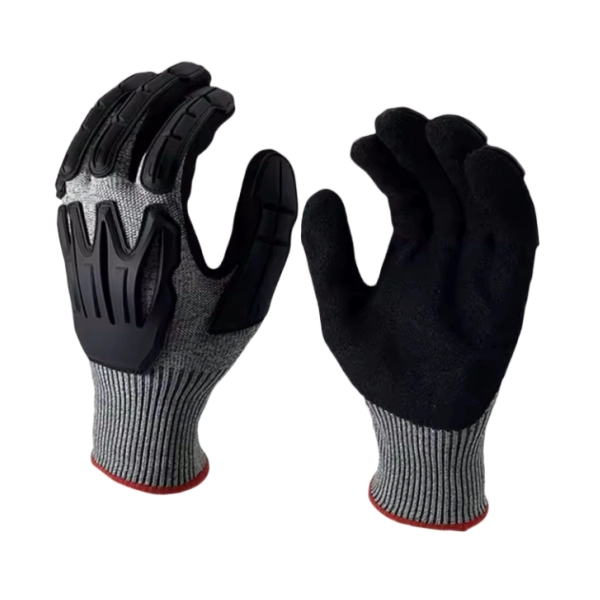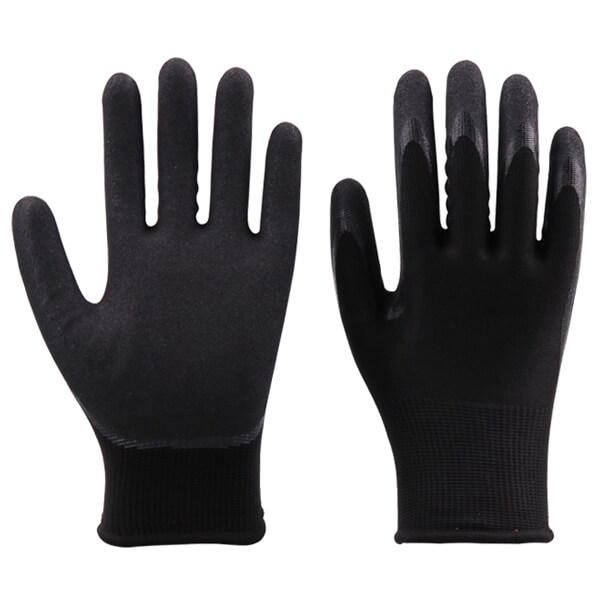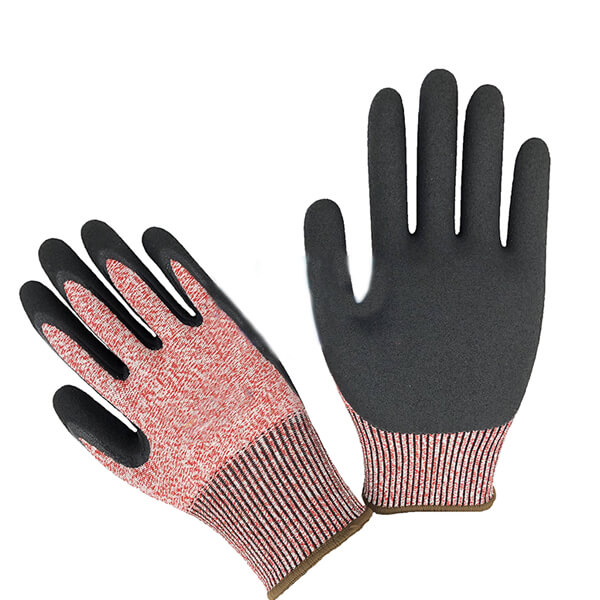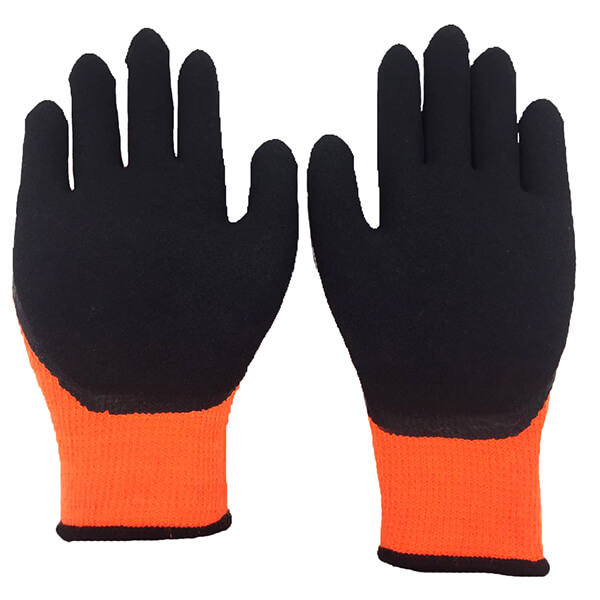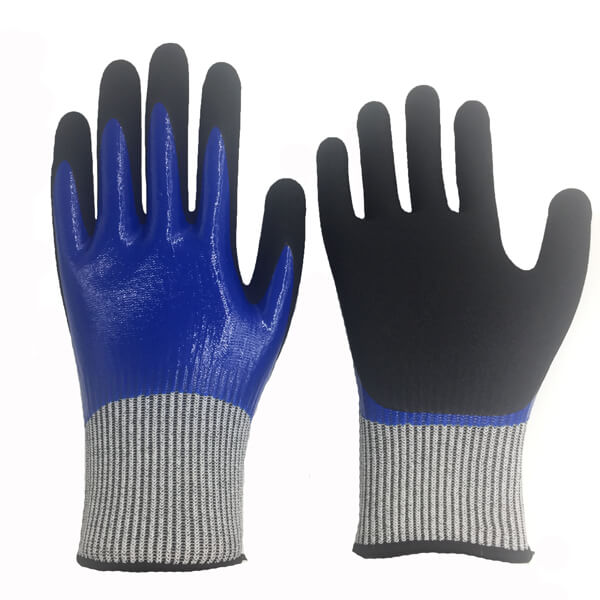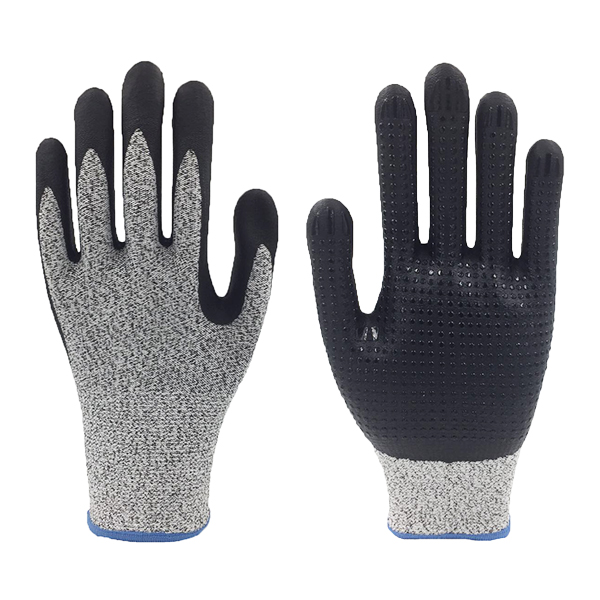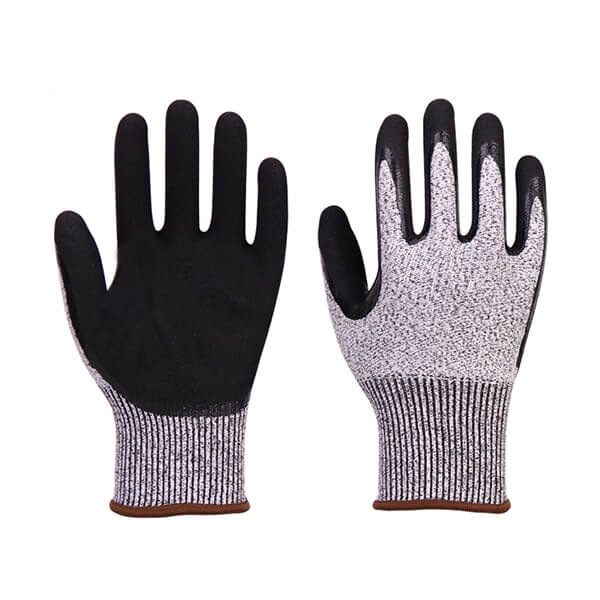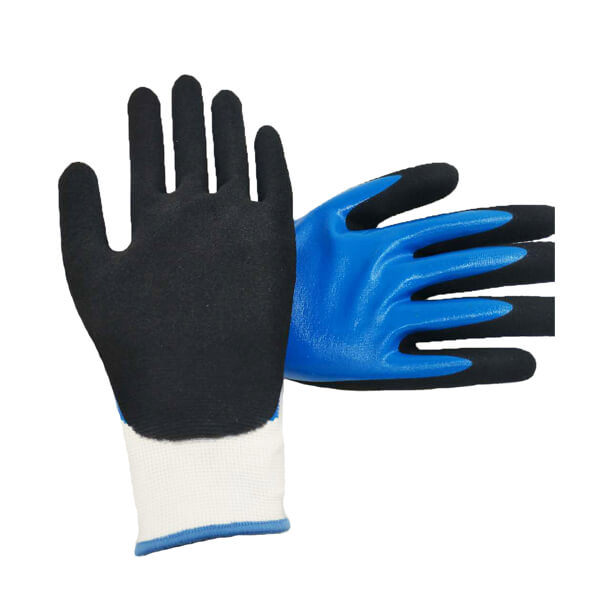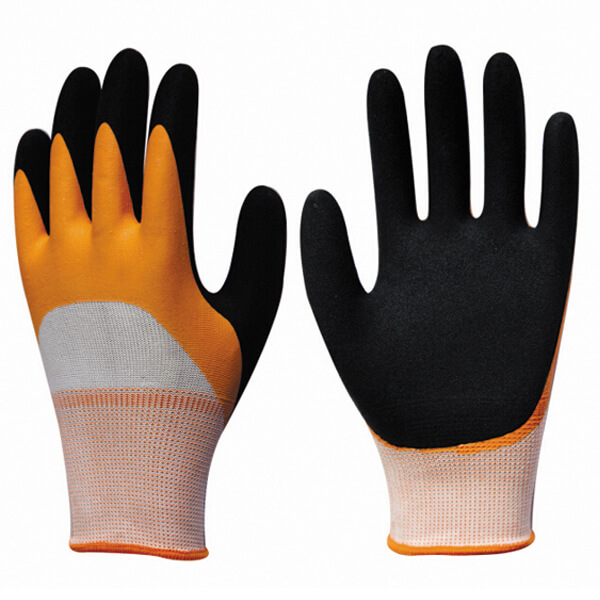Sandy Work glove
Sandy work gloves, including latex sandy work gloves and nitrile sandy work gloves.
The production process of sandy gloves. The gloves are first dipped in the rubber or semi-fluid state, and the salt is sprayed on the rubber surface. Because the rubber surface is not solidified, the salt particles will be embedded on the rubber surface. After baking in the oven, the rubber surface is solidified and the gloves are washed again. Then dry. During the washing process, the salt will dissolve into the water, and the rubber surface will leave a pitted surface.
Unlike crinkle gloves, matte gloves have two more steps than latex crinkle gloves, one is water washing and another one is heated to dry, which is why these gloves are more expensive than crinkle gloves.
The biggest advantage of sandy gloves is good comfort and breathability, feel. The second advantage is the non-slip, the anti-slip of the crinkle gloves is due to the increase of the friction of the rubber surface, and the method of the sandy glove is the dense hole on the rubber surface. The air generated during the use of the negative pressure is anti-skid, just like the sucker of the octopus. When the rubber surface is in contact with the object, the air in the small hole is squeezed out, so that an adsorption force is generated between the rubber surface and the object.
Gloves Under dry conditions, the anti-slip ability of the two gloves is basically the same, but in an oily or slippery environment, the crinkle gloves almost lose the anti-slip ability, while the sandy gloves are almost unaffected. When there is water or oil on the surface of the object, the water and oil are squeezed to the side by the air in the small hole, so that the contact surface is cleaned, thereby ensuring the adsorption between the surface of the object and the small hole. It is this adsorption that gives the sandy work gloves a superior anti-slip ability.

